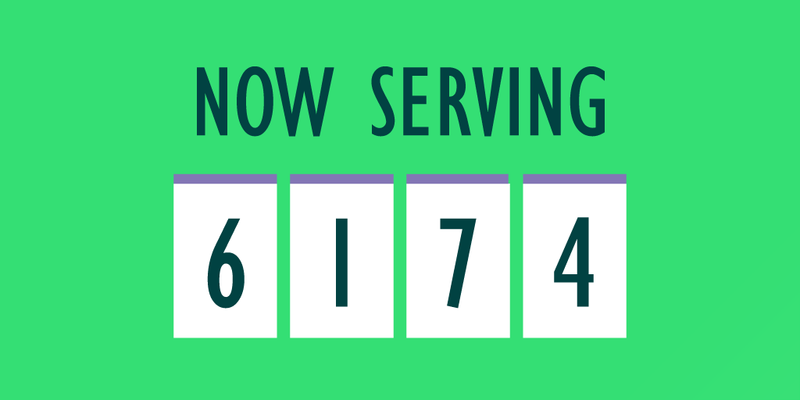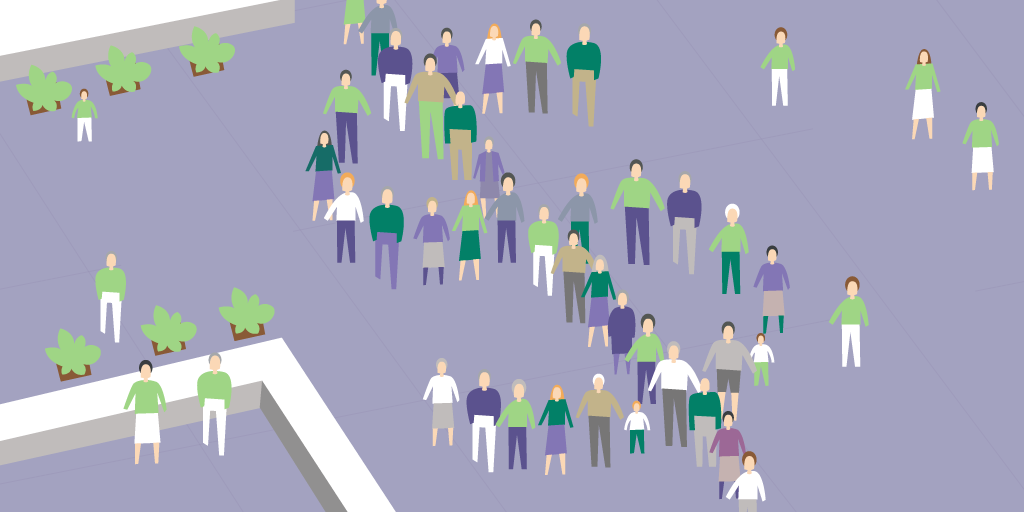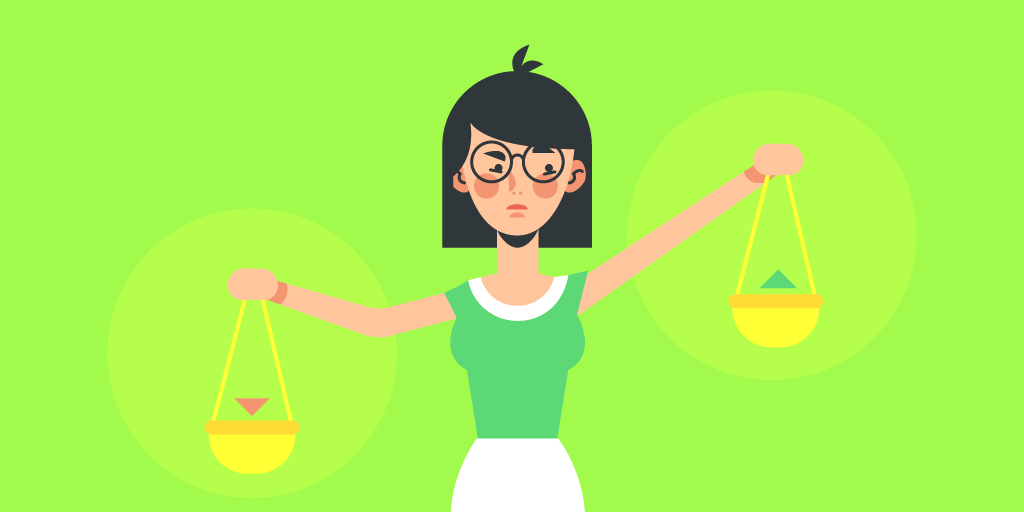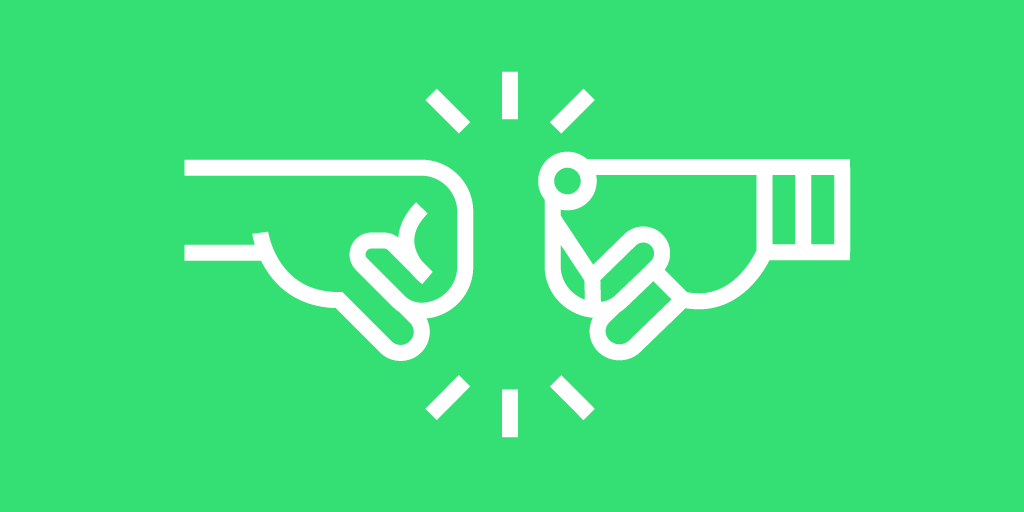What kind of image forms in your head when you think of long queues? Surely, you imagine a line that stretches continents, consists of somewhere between a hundred and googleplex amount of people, and could even make Gandhi fuming.
What if I told you long queues are far more common than you think? That they may not always be visible to a naked and uncritical eye?
Today, we discuss the different types of queues and their effect on our everyday lives.
Reading about queues ain't your idea of fun time? How about fixing them? Sign up for a free 14-day trial of Qminder, and make disastrous queues a thing of the past.
The application of supply and demand in queuing theory
This seems like as good an opportunity as any to recap the Macroeconomics 101.
Demand refers to the quantity of products or services desired by the customers. Supply refers to the quantity of products or services available for purchase — i.e., supplied by the producers.
The standard logical line of thinking is that higher demand leads to higher prices. That, in turn, leads to an increase in supply, since producers see they can make money by meeting their customers’ desires.
According to Professor Nick Haslam, from the Melbourne School of Psychological Sciences at the University of Melbourne, queuing is a “social norm that is governed by unspoken rules promoting efficiency and equality”.

He adds that “in a world where there is more demand than supply, queuing is a very efficient way to deliver a service without having a scrum of people fighting to get to it first.”
Queuing exists because there is an imbalance between the supply and demand side of services. If consumers could get whatever they wanted whenever they wanted it, queues would not be needed.
Thus, there are only two ways to radically reduce waiting time:
Reduce demand or increase supply
Adopt a queue management system
In a Freakonomics episode titled What Are You Waiting For? (no relation to the title of our article, I swear), Felix Oberholzer-Gee, an economist at Harvard Business School, describes queues as a “way to deal with short-term fluctuations in demand”.
Queues are formed due to scarcity. Whenever one sees a line, Oberholzer-Gee opines, “the first thing to ask is what’s the scarcity”.
“As a consumer in a market economy, you should expect that everything happens for you instantaneously all the time. Then when that’s not true, you need to ask, “What’s the constraint?” The constraint is sometimes cost, sometimes availability of skilled personnel, sometimes availability of space, but there’s got to be some constraint; otherwise, we wouldn’t see a line.”
Those are the queues of our lives
Depending on which study you trust, we spend a total of 169 hours during the average adult lifetime – the equivalent of five months, two weeks and five days — standing in queues.
The average adult wastes five hours and 35 minutes queuing each month, with standing in line at the supermarket taking up the largest amount of time. Over a year, the average Brit queues for more than 67 hours – or almost three days.
(For similar and more horrifying stats on queues, see our article The Cost of Queues: How Improper Queue Management Affects Your Bottom Line.)

There are of course different kinds of lines – some less avoidable than others. If you don’t live alone, and especially if you live in a multi-generational family with tons of siblings, you may have to queue behind them. Woke up late? Too bad, no brushing your teeth for another ten minutes or so.
(This generally does not concern pets. Pets couldn’t give less of a damn about your bathroom privileges.)
Going to work, you need to board a bus. Again, you and other passengers form a queue. Prefer a taxi? There are other people already hailing it. Maybe an uber or bolt, then? You’re not the only one with an app, genius! Hope you weren’t planning on spending your time productively, because you’re about to wait some more.
If you’re at a restaurant and waiting for the staff to take your order, you too stand in line — or sit in line, for that matter. The only difference is, this queue is invisible, theoretical. You cannot measure it with a naked eye.
This line of logic extends to everything else in your day-to-day life. Waiting for your cup of coffee, trying to use an office printer, or even riding an elevator — everything you do, you have a chance of someone else appearing in front of you, forcing you to wait.
Each line comes with its own set of rules and conditions. If you don’t want to stand in a long line in a cafeteria, you can opt out for some place else. This doesn’t work for airports, where — provided that you have bought a ticket — the stakes of leaving a queue are that much higher.
And now, class, a quick quiz for you: What’s the common element in all of these mundane examples?
Whenever more than one person is seeking out a product, a queue forms up.

Not all queues are created equal
Why is it that some queues leave us exhausted and angry, and some are barely a blip on our radar?
Information plays a crucial part here.
Queues that anger us the most are those where we are left in the dark. If we lack critical information about how long we need to wait, queuing will upgrade from a necessary nuisance to Shakespear-level of tragedy.
To quote a Cornell study on customer wait experiences:
“Since peak experiences, positive and negative, influence perceptions of the service encounter as a whole, managers should carefully consider the design of the wait experience and waiting environment, as an integral part of the entire service experience.”
Keeping visitors informed plays a major part in shaping a positive waiting room experience. That’s why a proper queuing tool sets out to not only streamline queuing processes but also keep customers in touch with the average wait times and the expected time of their turn.

Queues as a force of good?
Although queues usually signal about imbalance in the supply-demand side of things, they can be used for more than causing annoyance.
Some companies use long queues as a marketing gimmick, exploiting the bandwagon effect. Because there are many people standing in line for something, more people join in out of fear of missing out on something trendy.
As a result, the queues become longer, and the product becomes even more enticing.
At the risk of providing a tired, cliche example: think of the queuing frenzy of Apple fans whenever they want to get their hands on some new Tim Cook-approved device.
On the customer side of things, in some limited contexts queuing can actually boost the satisfaction one gets out of a product or service.
An experiment designed by Minjung Koo and Ayelet Fishbach found out that queuing increases the value of products by stimulating the enjoyment we get out of acquiring them. In this context, the longer the line, the greater the value people put on the product or services.
In the Freakonomics episode on queuing, Fishbach describes how she and her colleagues designed an experiment disguised as a smoothie sample-tasting study. Researchers stood in line behind half of participants and in front of the other half.
The result? People who thought there was a line behind them reported that the smoothie tasted better.
“In other words, once we wait for something, we value it more than if it was effortless, than if we never had to wait.”

People infer value “on the basis of accomplished actions, which correspond to the presence and number of people behind them in a queue”. The nuance is that the presence of people behind, and not ahead of, someone in a queue contributes to increasing the enjoyment factor.
Thus, outlets that emphasize the presence of people behind someone in a queue, via for example mirrors, can artificially increase the value of their products in consumers’ eyes.
Of course, just as not all queues are equal, not all products are made equal, either. In economic crises, like the one currently experienced by Venezuela, it’s necessities that are in shortage. People do get satisfaction out of not having anyone before them in a queue, but for a different, survival-tinged reason.
The grand lesson here is that queues are something that we have to navigate every day, whether we want to and whether we notice them or not. They stem from scarcity, be it scarcity of time, place or resources.
It should be the goal of businesses not to add to the queuing misery and streamline waiting experiences using whatever means necessary.
Oh, and also, if you don’t want to turn your store into Venezuela, it’s not a bad idea to turn to queue management systems for help.
Speaking of which, your good ol’ pal Qminder is here to offer assistance. Mind signing up for a 14-day trial? Let your visitors taste the queuing of the future, free of charge.






